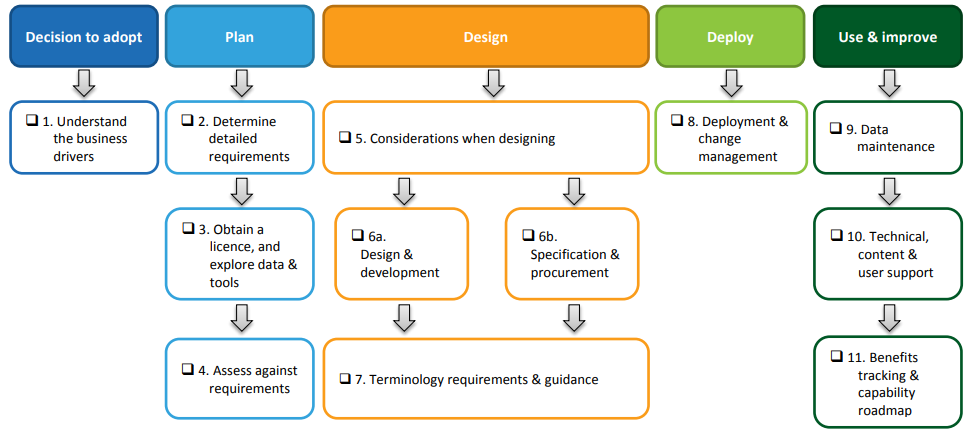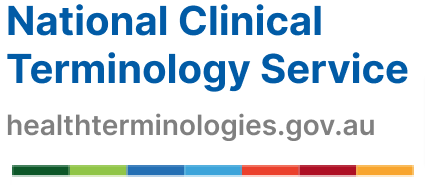Implementation: what’s involved
Understand the phases and steps involved in implementing SNOMED CT-AU and the Australian Medicines Terminology (AMT) in clinical software.
Process: Implementing SNOMED CT-AU in clinical software

Phase 1: Decision to adopt
Step 1: Understand the business drivers
The first step in deciding to adopt SNOMED CT-AU or AMT is understanding the relevant business drivers. Clinical terminology can benefit health organisations through:
- clinical data capture, exchange, reporting, analysis and decision support
- medicines data capture, exchange, reporting, analysis and decision support
- all of the above.
See how other organisations are using SNOMED CT-AU and the AMT and find out more about uses.
Phase 2: Plan
Step 2: Determine detailed requirements
Once you gain an understanding of the business drivers, you can start to determine detailed business, functional and non-functional requirements.
Step 3: Obtain a licence and explore data and tools
To help you gain a better understanding of SNOMED CT-AU and AMT:
- explore SNOMED CT-AU and AMT content via the Shrimp terminology browser
- register for an account and get a license so you can access terminology content (top right of screen)
- read introductory documents.
Step 4: Assess against requirements
Review documents to work out how SNOMED CT-AU and AMT can meet defined business, functional and non-functional requirements.
Phase 3. Design
Step 5: Considerations when designing
Many factors influence software design, including how the terminology will be implemented.
Step 6: Consider whether to adopt SNOMED CT-AU and AMT by:
- a. upgrading existing systems, or designing and developing your own bespoke terminology-enabled product
- b. adapting, procuring or subscribing to a third party terminology-enabled product.
Step 7. Terminology requirements and guidance
Run development and testing cycles to ensure the product meets all requirements prior to deployment for live use.
Phase 4. Deploy
Step 8. Deployment and change management
Undertake training and change management activities.
Phase 5. Use and improve
Step 9. Data maintenance
Regularly update terminology content to keep pace with the latest clinical content. SNOMED CT-AU and AMT updates are currently released monthly.
Step 10. Technical content and user support
Access content, technical and implementation support through our Agency Help Centre. Submit a support request, email help@digitalhealth.gov.au or telephone 1300 901 001.
Step 11. Benefits tracking and capability roadmap
Measure the benefits your organisation has received since adopting SNOMED CT-AU.
Detailed guidance
Support
We have 2 support groups for implementers:
- Australian Clinical Terminology User Group (AuCT-UG – for SNOMED CT-AU implementers)
- AMT Support Group (for AMT implementers).
We host 2 or 3 virtual get togethers per year for each group. These events give implementers a chance to hear about the latest SNOMED CT-AU developments and ask questions.
If you’d like to join, contact help@digitalhealth.gov.au.
Considering implementing
SNOMED CT-AU?
Healthcare providers and software vendors: please get in touch so we can advise on the best approach.

Call 1300 901 001
8am – 5pm (AEST/AEDT), Monday – Friday

